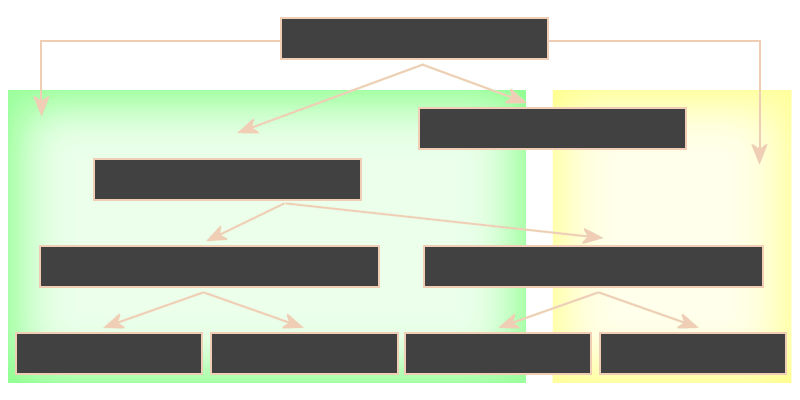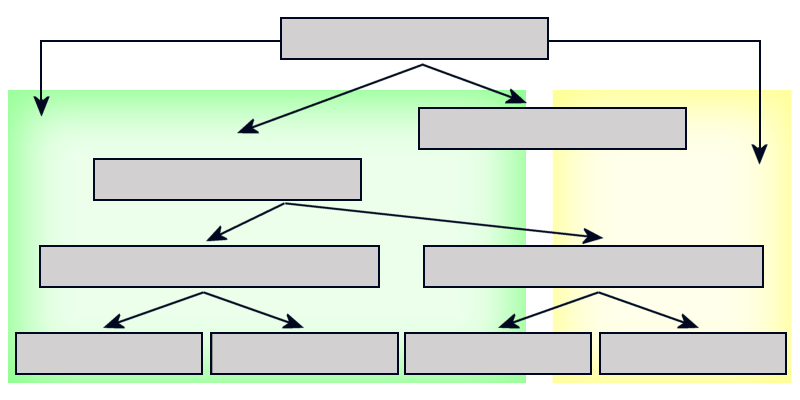Classification of Radar systems (1)
Depending on the desired information, radar sets have different qualities and technologies. One reason for these different qualities and techniques, radar sets are classified in:



Figure 1: Classification of radar sets (interactive picture)
Imaging Radar / Non-Imaging Radar
Radar sets can be roughly divided into two categories: Imaging radar techniques (imaging radar) and non-imaging radar techniques (non-imaging radar). Imaging radar methods attempt to calculate a map-like image from the received information. Classic applications are weather radar and military air surveillance radar.
Non-imaging radar methods make their measurement results available as pure numerical values. Applications include some radar altimeters and speedometers. Non-Imaging Secondary Radar applications are immobilizer systems in some recent private cars.
Primary Radar
Primary Radar sets emit high-frequency signals that are reflected at targets. In contrast to secondary radars, primary radars receive their own emitted signals as echoes. The resulting echo signals are received and evaluated.
Secondary Radar
With these radar sets, the aircraft must be equipped with a transponder (transmitting responder) and receive a coded signal from the radar interrogator. The active response is generated in the transponder, which is then also coded and sent back to the secondary radar. The run time is also used as a measure of the distance, as with primary radar. This reply contains much more information (e.g. altitude, identification or technical problems on board, e.g. radio failure…) than that can be achieved with primary radar.
Pulsed Radars
Pulse radars emit a pulsed (keyed ON/OFF) signal of high power and very high frequency. This is followed by a longer pause in which the echoes can be received before a new transmission signal is transmitted. The direction distance and, if necessary, height of the target can be determined from the antenna position and runtime of the signal.
Continuous- Wave Radar
Continuous wave radar or CW radar radiates a transmitting power without interruption. The echo signal is received and processed simultaneously and continuously. The receiver does not necessarily have to be in the same location as the transmitter. Any powerful broadcasting transmitter can also function as radar transmitter if a remote receiver compares the propagation times of the direct signal with the reflected signal. The exact location of an aircraft can be calculated by evaluating the signals from three different television stations. (see passive radar).
Unmodulated CW- Radar
The transmitted signal of these devices is constant in amplitude and frequency. These devices are specialized in speed measurements and make use of the Doppler frequency. Distances cannot be measured. They are used e.g. as speed gauges by the police.
FMCW- Radar
The transmitted signal is constant in amplitude but modulated in frequency (Frequency Modulated Continuous Wave radar), or in phase shift. This makes it possible to determine the distance according to the runtime measurement principle. The distance (or height) can then be determined from the frequency shift or by the delay time of a given phase code. The advantage of these radar sets is that evaluation takes place without a time out for reception and thus the measurement result is continuously available.
Intrapulse modulated radars
These radar sets transmit with lower pulse power but with longer pulse duration. They modulate their transmitted pulse (similar to FMCW radar) in order to use pulse compression to determine the distance even within the duration of the transmitted pulse.
Bistatic Radar Sets
A bistatic radar consists of two or more separated (by a considerable distance) transmitting and receiving sites.
